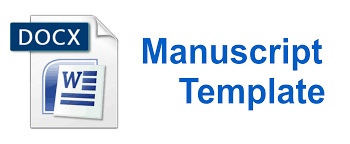Penyelesaian Pembiayaan Bermasalah Pada Akad Murabahah dI PT. Bank SUMUT Syariah KCP Stabat Menurut Fatwa DSN MUI
Keywords:
Non Performing Financing, Murabahah Contract, Fatwa DSN MUIAbstract
This study focuses on the discussion on the implementation of murabahah contract financing, the settlement of troubled murabahah contract financing at PT. Bank SUMUT Syariah KCP Stabat which is then analyzed and compared with the DSN MUI Fatwa regarding the settlement of problematic financing. The research method used in this study is a descriptive qualitative research method with an empirical approach. The results of the study explain that the implementation of murabahah contract financing at PT. Bank SUMUT Syariah KCP Stabat is almost the same as financing in general, namely starting with an application, survey and disbursement. Settlement of troubled murabahah contract financing at PT. Bank SUMUT Syariah KCP Stabat, namely intensive billing, giving warning letters, rescheduling, writing off, and the last is the execution of guarantees. Overall, the completion of problematic murabahah financing at PT. Bank SUMUT Syariah KCP Stabat is in accordance with the DSN MUI Fatwa, from the stage of intensive summons to execution of guarantees in line with the DSN MUI Fatwa, but regarding the release of customers who really are no longer able to pay off their financing payments even after the execution of guarantees is not carried out by PT. Bank SUMUT Syariah KCP Stabat because debt is something that customers still have to pay and avoid similar things being imitated by other customers
References
Damanhur, Albra, W., Syamni, G., & Habibie, M. (2018). What is the determinant of non-performing financing in branch Sharia regional bank in Indonesia. Emerald Reach Proceedings Series, 1, 265–271. https://doi.org/10.1108/978-1-78756-793-1-00081
Firdaus, R. N. (2016). Pengaruh Faktor Internal Dan Eksternal Yang Mempempengaruhi Pembiayaan Bermasalah Pada Bank Umum Syariah Di Indonesia. El Dinar, 3(1), 82–108. https://doi.org/10.18860/ed.v3i1.3339
Harahap, M. A., Alam, A. P., & Pradila, M. (2019). Pengaruh Nilai Tukar (Kurs) dan Inflasi terhadap Tingkat Non Performing Financing (NPF) Pada Bank Syariah. El-Mal: Jurnal Kajian Ekonomi & Bisnis Islam, 2(2), 214–224. https://doi.org/10.47467/elmal.v2i2.548
Hardi, E. A. (2019). Fatwa Dsn Mui Dan Perkembangan Produk Perbankan Syariah Di Indonesia. An-Nisbah: Jurnal Ekonomi Syariah, 5(2), 82–105. https://doi.org/10.21274/an.2019.6.1.82-105
Havidz, S. A. H., & Setiawan, C. (2015). Bank Efficiency and Non-Performing Financing (NPF) in the Indonesian Islamic Banks. Asian Journal of Economic Modelling, 3(3), 61–79. https://doi.org/10.18488/journal.8/2015.3.3/8.3.61.79
Khairunisa, M. (2017). https://jurnal.stei-iqra-annisa.ac.id/index.php/al-amwal/article/view/58. Jurnal AL-AMWAL, 6(1), 55–82. https://jurnal.stei-iqra-annisa.ac.id/index.php/al-amwal/article/view/58
Muhammad Arfan Harahap, Yochi Elanda, M. Sabri A. Majid, Marliyah, R. H. (2022). Bagaimana Utang Mendorong Terjadinya Krisis? Solusi dari Sistem Keuangan Islam. Reslaj: Religion Education Social Laa Roiba Journa, 4(3), 14–35. https://doi.org/DOI: 10.47476/reslaj.v4i3.905
Muhammad, R., Suluki, A., & Nugraheni, P. (2020). Internal factors and non-performing financing in Indonesian Islamic rural banks. Cogent Business and Management, 7(1). https://doi.org/10.1080/23311975.2020.1823583
Sup, D. F. A., & Suhendi, I. (2022). Konsep Muqasah Pada Pembiayaan Murabahah Dalam Perspektif Fatwa Dsn-Mui. Kodifikasia, 16(1), 53–73. https://doi.org/10.21154/kodifikasia.v16i1.3818
Wahid Wachyu Adi Winarto, F. F. (2022). Analisis Sistem Pengelolaan Keuangan Pembiayaan Syariah Dengan Akad Murabahah. JPS (Jurnal Perbankan Syariah), 1(2), 1. https://doi.org/https://doi.org/10.46367/jps.v1i2.234
Wahyuni, E., & Maulidia, S. (2020). Analisis Penanganan Pembiayaan Murabahah Non Performing Financing (Npf) Dengan Mitigation of Risk in Islamic Financial Institutions Di Kjks Bmt Al-Makmur Cubadak Lima Kaum Kab. Tanah Datar. ISTIKHLAF: Jurnal Ekonomi, Perbankan Dan Manajemen Syariah, 2(1), 14–35. https://doi.org/10.51311/istikhlaf.v2i1.219









